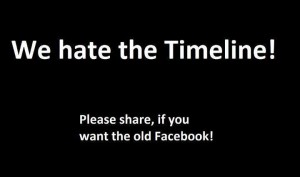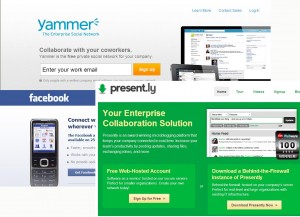I have a fairly fundamental belief that your users and your customers needs should be at the heart of any website. If the people that the website has been built for don’t like the website and don’t find it easy to use then they won’t come back and use it again. Websites should support their customers in achieving their goals. This is a principle which was at the heart of the project I ran for Age UK but which has been key in the websites I have worked on across my career.
I am a huge advocate of User Testing and have really enjoyed working with some great usability companies who have time and again upheld my belief in the importance of this step in web design projects. You would think then that I would also believe that when it comes to feedback on design changes that users are always right, but this is not necessarily the case. The challenge is that people don’t like change, even if the change is for the better. This may sound a little contradictory to my statements above but I have time and again seen it when you carry out user testing with regular users of a site versus new users of a site:
- When new users to a site are shown an old version of the site and a new version which has been designed with the user journey in mind, if the site has been designed well then the new site will usually be preferred. They have no preconceptions or user journey to unlearn.
- When existing users to a site are shown an old version of the site and a new version of the site their previous experience will impact their decision. They may be expecting content to be in a certain place having ‘learnt’ that it is there, and they have to ‘relearn’ the new version. This can initially make a site seem less friendly.
Users don’t always know what it is that they don’t like about the new site and are not always as clear about why they are finding it difficult. This in itself suggests that the problem is not with the new site but in that they were used to something else. The phrase that sticks out in their feedback is often “it’s different” or “why has it changed?”.

For long established sites this creates a real challenge in progressing change without frustrating the existing users, and I believe the key here is communication. The most visible case of this at the moment is on Facebook where there seems to be a large number of users sharing the “We hate the Timeline” image from Occupy Wall St’s profile. I have asked friends who have shared this image why they don’t like the Timeline and they find it very difficult to tell you why. I am actually fairly neutral in this debate, and can see real value for organisations in the Timeline interface, however I shouldn’t be surprised to see it’s created such a huge backlash in the general user base. It is a big change and I believe it wasn’t well communicated what was happening, when it was happening or why. This has left the majority of the Facebook users confused & upset.
So are these users right or are they wrong? Well without wanting to sound like I’m sitting on the fence I don’t think they are right or wrong, I believe the key is in understanding: understanding the challenges in learning a new site for both new and existing users, and helping all users to understand any changes being made.
As digital experts managing web projects, and as designers, we need to work with experts and work with users to try and balance this difference of opinion, introduce change in a controlled way, and ensure that resistance to change doesn’t stifle innovation and long term improvements.
What do you think? Have you encountered resistance to change within your organisation or your user base and how have you overcome it?


